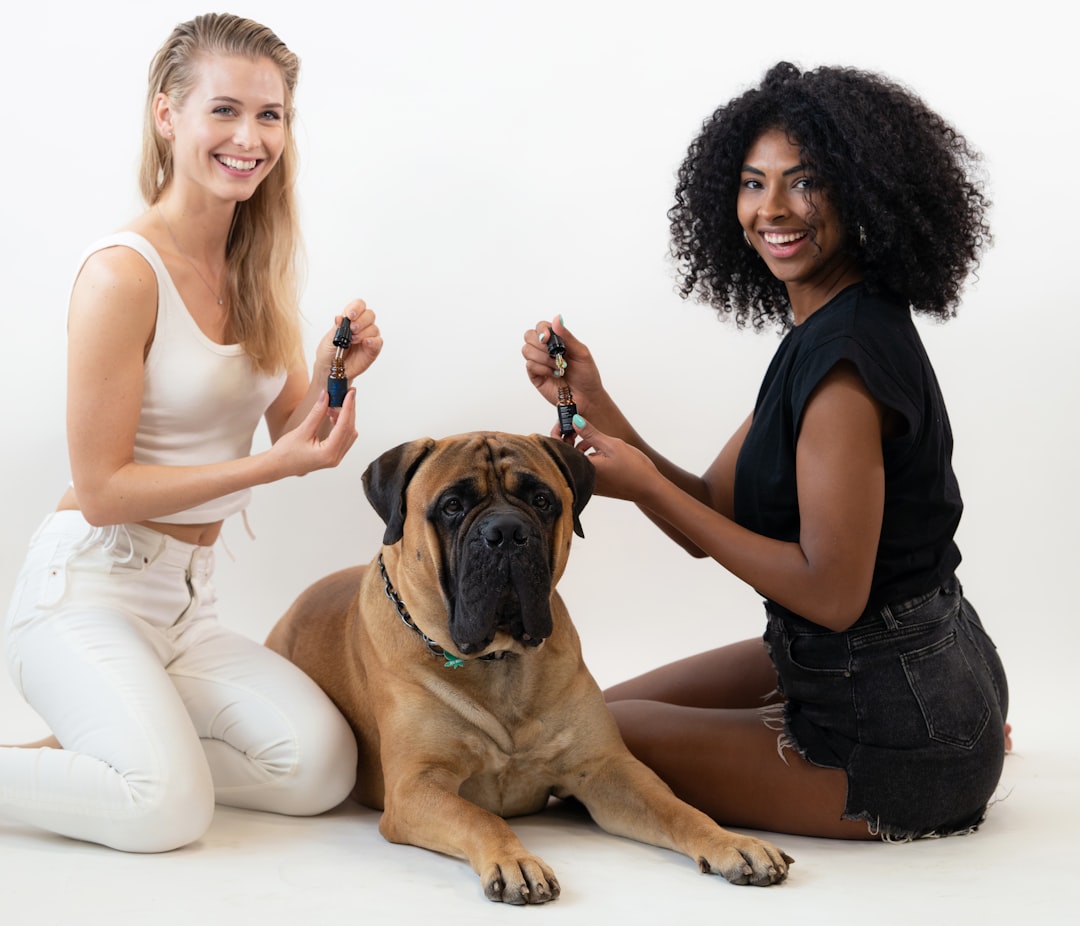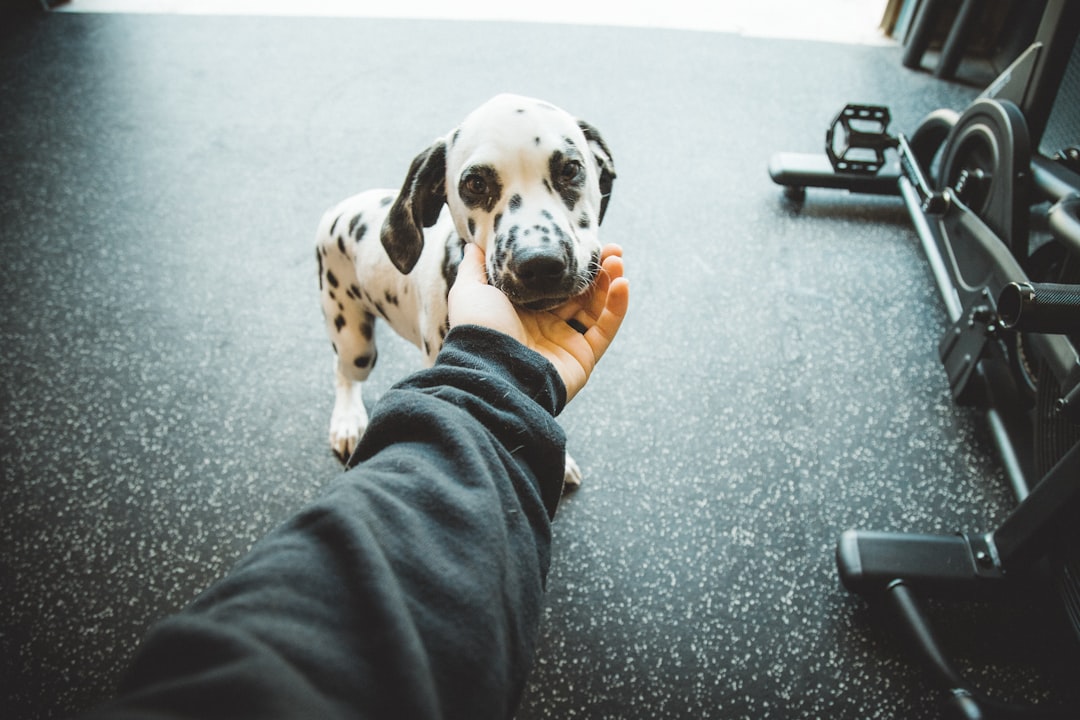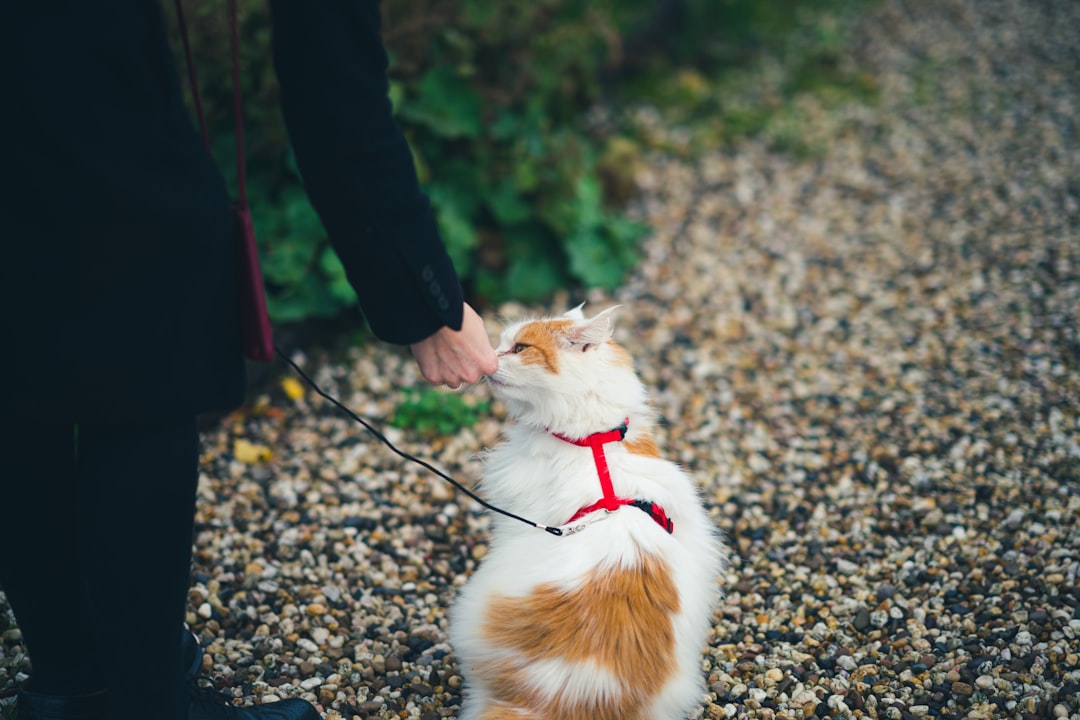

Engage prospects with a scan and streamline customer engagement with FREE QR code marketing tools by Sona – no strings attached!
Create a Free QR CodeFree consultation

No commitment

Engage prospects with a scan and streamline customer engagement with FREE QR code marketing tools by Sona – no strings attached!
Create a Free QR CodeFree consultation

No commitment
QR codes have rapidly transformed from a digital novelty to a valuable tool for connecting offline and online engagement. For pet training services, QR codes offer a user-friendly, app-free solution to increase bookings, improve lead quality, and connect with pet owners seamlessly.
Many pet training businesses struggle with the limitations of printed brochures and posters that are difficult to track or convert into measurable leads. Missed opportunities and incomplete contact lists remain a challenge when prospects stay anonymous after attending an event or receiving a handout, all while competitors vie for attention.
Integrating QR codes at every client interaction point allows pet training services to elevate paper assets like appointment cards, event flyers, and signage into actionable, data-driven marketing channels. This not only streamlines offline-to-online engagement but also increases visibility into prospect behavior and maximizes ROI through more agile, insightful marketing campaigns.

Many pet training providers still rely on paper sign-ups, cash-only discounts, and manual class rosters. These analog processes fail to capture intent in the moment and rarely translate into measurable conversions. QR codes in marketing bridge the gap between physical touchpoints and digital outcomes, giving interested pet owners a fast and intuitive path to book, register, and stay engaged.
To drive higher conversion rates, replace friction-heavy interactions with simple scan-and-go experiences. Whether at a weekend workshop or during a lobby consultation, a scannable call to action reduces drop-off by turning curiosity into a clear next step. A strong QR deployment also makes your print spend measurable, so you can shift budget toward the channels that consistently deliver bookings and repeat visits.
When done well, a QR-first approach transforms anonymous handouts into real-time alerts and enriched contact profiles. Teams can prioritize high-intent prospects, accelerate outreach, and tailor messaging based on what was scanned, where, and when. Platforms like Sona QR support the entire workflow, from code creation to CRM sync and performance reporting, so your conversions do not depend on guesswork.

Pet training depends on trust, timing, and accessibility. Owners often make decisions in response to a moment, such as a frustrating walk or a recommendation from a vet. See this veterinary marketing guide for ideas on connecting those moments to action. If your next step requires typing a URL or waiting to call during business hours, momentum fades. QR codes eliminate this friction by making every printed asset a one-scan pathway to action.
They also address a thorny challenge in this space: offline-to-online visibility. Trainers invest heavily in community events, referral relationships, and print collateral, yet struggle to see which efforts convert. QR codes turn static materials into dynamic touchpoints that deliver real data and adaptable messaging.
For pet training businesses, QR codes directly support outcomes like faster bookings, higher show-up rates, and stronger upsell into advanced programs. The result is more relevant communication and a connected experience that keeps clients engaged from the first inquiry through long-term behavior progress.

Pet training organizations benefit from a mix of QR formats that match the needs of busy owners. Choosing the right format ensures pet parents land exactly where they expect, without extra clicks or confusion. The most effective formats in this vertical are those that streamline scheduling, capture behavior details, and transfer trainer contact data instantly.
Dynamic QR codes are especially valuable because they let you update destinations after printing, adjust offers by season, and A/B test landing pages without reissuing collateral. Static codes still have a place for evergreen resources like a training philosophy PDF or a general welcome video.
With Sona QR, you can generate and manage these formats centrally, swap destinations when campaigns change, and track scans by location and asset. This flexibility is especially useful in pet training, where schedules, class availability, and promotions shift often.

Growth in pet training services often hinges on being present at the right moment, then making it effortless for owners to respond. Smart QR placement increases those moments significantly and turns each one into a measurable opportunity. Start by mapping your typical offline touchpoints, then layering QR codes where engagement is most likely.
Prioritize placements that match client behavior. For example, wait areas and checkout counters are natural pause points where pet owners have time to scan. Dog parks, vet clinics, and pet supply stores bring together high-intent audiences who are primed to act with the right prompt.
A thoughtful placement strategy reduces reliance on hope and replaces it with predictable lead flow. Over time, you will see which environments, messages, and formats drive the most revenue, allowing you to optimize spend and staffing accordingly.
Every stage of the pet owner journey can be supported by the right QR code experience. From first exposure at a community event to signing up for advanced courses, codes turn passive interest into immediate next steps. The key is to align each use case with a clear outcome and a compelling promise of value.
Make sure the destination is mobile optimized, loads quickly, and mirrors the language on the printed prompt. When someone scans a code that says “Book your first puppy class,” they should arrive at a booking interface with relevant times, prices, and a simple checkout.
These use cases make offline outreach measurable and efficient. Owners get immediate value through convenience and content, while you collect the data required to prioritize, personalize, and nurture relationships over time.
Every scan generates intent data. By deploying multiple QR codes across touchpoints, pet training providers can understand interest levels, preferred services, and timing. These signals power segmented lists that drive smarter retargeting, higher relevance, and better ROI.
Think of your codes as beacons that map the buyer journey: awareness at a dog park poster, consideration through a curriculum brochure, and conversion from a discount card. Each scan adds context that helps you adjust message, medium, and timing.
With Sona QR, you can create codes for each stage, tag use cases consistently, and sync scan activity to HubSpot, Salesforce, and ad platforms. This turns QR codes into a full-funnel mechanism for identifying buyer readiness and lifting conversion rates across campaigns.
QR codes act as the connective tissue between offline and digital channels. In pet training services, where much of the discovery happens in physical spaces, QR-enabled experiences unify your marketing so every asset works toward the same goals. When a code is scanned, you can track attribution, deliver relevant content, and personalize next steps in real time.
The result is a harmonized funnel: a poster sparks interest, a scan captures intent, a landing page educates and books, and downstream automation ensures consistent follow-up. You can apply this structure to virtually any channel where pet parents encounter your brand.
A centralized platform like Sona QR allows you to manage codes across channels, monitor performance by placement, and connect scan data to your CRM and ad platforms. This ensures offline engagement becomes fuel for your digital engine, not a dead end.
Launching a QR campaign is straightforward when you follow a structured plan. The goal is to match a specific use case with the right format, design, placement, and measurement, so you can optimize quickly. These steps will help you move from idea to impact with minimal friction.
Before you begin, set a clear conversion objective. For example, “Increase bookings for puppy socialization classes in the next 30 days,” or “Collect 100 new behavior assessments from adoption event attendees.” Align every creative decision to that outcome.
A disciplined approach turns each QR placement into a controlled experiment. The insights you gain from one campaign will inform the next, compounding your results month after month.
Pet training services need proof that marketing leads to bookings, completed programs, and referrals. Traditional print-heavy outreach makes attribution hard, since you cannot easily connect a brochure to a sale. For a deeper framework, see Sona’s blog post on offline attribution. QR codes unlock measurable data across the entire lifecycle so you can invest where it counts.
The most effective analytics program tracks not only scans but the actions that follow. When a pet parent scans a code, you should be able to see the source, the landing page visited, whether they booked, and whether that booking turned into repeat business. This requires consistent tagging, CRM integration, and a view of multi-touch journeys. Sona’s blog on single vs multi-touch attribution models explains how to evaluate impact across touchpoints.
With Sona QR and Sona, an AI-powered marketing platform that turns first-party data into revenue through identity resolution, automated attribution, and data activation, you can go beyond basic scan counts. Sona QR captures real-world engagement and enriches contacts automatically. Sona.com adds identity resolution and multi-touch attribution, linking QR scans with website visits, email clicks, and ad interactions. For actionable retargeting tactics, see Sona’s Playbook, intent-driven retargeting. The outcome is a clear line from each code to revenue, which turns QR from a convenience feature into a performance channel.
Effective QR campaigns require more than placing a code on a flyer. The surrounding experience, staff enablement, and post-scan workflows determine whether a scan becomes a booking or a missed chance. Focus on clarity, value, and follow-through.
Use tips that match your most common media and client journeys. If your audience leans on vet referrals and community events, prioritize those contexts and train staff accordingly. Keep each code tightly aligned to one action to reduce confusion.
Industry leaders report that consistent, timely follow-up enabled by QR-triggered workflows lifts attendance, increases upsell to packages, and improves client satisfaction. Small details like a clear CTA and a well-designed landing page can meaningfully improve scan-to-book conversion rates.

QR-led campaigns are producing measurable wins for pet training providers that historically struggled to connect print with performance. When codes are placed thoughtfully and linked to real value, pet owners respond quickly.
Leverage creative placements that fit your audience’s routines. Vet clinics, adoption events, dog parks, and pet supply stores all gather high-intent owners who will scan when the promise is clear and convenient.
These examples demonstrate how QR codes can transform static collateral into performance assets. The biggest wins come from pairing each code with a clear promise and an immediate path to value.
QR codes deliver the most impact when they fit the environment, the audience’s mindset, and the next step you want them to take. Think of placement and message as behavioral design: you are making the desired action the easiest option available.
Avoid common mistakes such as burying the QR code in dense artwork, using vague CTAs, or placing multiple codes too close together without labels. These missteps reduce scan rates and muddy attribution.
Expert trainers find that consistent, personalized follow-up after each session substantially increases both immediate outcomes and long-term satisfaction. QR codes make this level of engagement scalable by triggering timely check-ins, homework reminders, and milestone celebrations.
QR codes are more than a convenience. They are a strategy for turning every physical touchpoint into a digital entry point and every moment of interest into action. For pet training services, QR codes bring the offline world online with clarity and speed, allowing owners to book, learn, and engage without friction.
Key takeaways include:
With a platform like Sona QR, you can generate dynamic codes, manage them across channels, track performance in real time, and sync scan activity with CRM and attribution tools. That means you can capture demand at the source, convert it quickly, and grow repeat business through smarter, data-informed engagement.
QR codes have reshaped how pet training services approach modern marketing by making offline initiatives measurable and adaptable. Embed codes across your print and event footprint, connect them to mobile-first experiences, and route scan data into your CRM. Whether you aim to boost obedience class attendance, launch specialty programs, or nurture long-term client relationships, QR-driven workflows give you the precision and speed to compete and win. Start creating QR codes for free.
QR codes have revolutionized pet training services by transforming traditional methods into dynamic, trackable engagement opportunities that drive client acquisition and enhance training outcomes. Whether it’s providing instant access to video tutorials, scheduling sessions, or sharing personalized training plans, QR codes streamline the customer journey while capturing valuable insights on client interactions.
Imagine knowing exactly which training materials or promotional efforts attract new pet owners and foster loyalty—all in real time. With Sona QR, you can create dynamic, trackable QR codes that update instantly without reprinting, connecting every scan directly to your business growth. No guesswork, just actionable data that helps you optimize campaigns and deepen client relationships.
Start for free with Sona QR today and turn every scan into a new client, a more engaged pet owner, and measurable success for your pet training services.
The article emphasizes using personalized behavior assessments, clear training plans, positive reinforcement, and providing accessible resources like video tips and tutorials linked via QR codes to enhance pet training effectiveness.
Reliable pet training services use QR codes on flyers, business cards, and storefront signage that link to booking pages, trainer profiles, and class schedules, allowing you to quickly access and engage with nearby trainers.
Choose a trainer who provides accessible contact information via QR codes, shares credentials and training philosophies, offers behavior assessments, and uses technology to personalize training and maintain clear communication.
Training your pet improves behavior, builds trust, and enhances owner-pet communication, while QR-enabled services offer convenient booking, tailored training plans, ongoing support, and measurable progress tracking.
Pet training services include group obedience classes, specialty programs like agility or service dog training, behavior assessments, video tip resources, and app-based progress tracking, all accessible via various QR code formats such as web links, forms, vCards, and app downloads.
QR codes create frictionless scan-and-go experiences that replace manual forms, connect offline assets to CRM systems, enable instant sign-ups, and provide measurable data to optimize marketing and outreach efforts.
Effective QR code placements include event signage, appointment reminders, business cards, storefront displays, direct mail campaigns, product packaging, vet clinics, dog parks, and pet supply stores.
Dynamic QR codes are best for trackable and updateable campaigns like class calendars and promotions, while static QR codes suit evergreen content such as training philosophies or welcome videos.
Businesses can track scan volume, location, device type, conversion rates, and follow-up actions through integrated CRM systems and analytics platforms to attribute bookings and revenue to specific QR code placements.
Avoid placing QR codes in cluttered or hard-to-scan areas, using vague calls to action, overcrowding multiple codes without labels, and failing to train staff to encourage scanning and explain benefits.
QR codes enable timely follow-ups, homework reminders, milestone celebrations, and personalized content delivery, making client engagement scalable and improving satisfaction and retention.
Providers should define clear conversion goals, select appropriate QR code types, design branded and scannable codes, deploy them in high-impact locations, and continuously track and optimize performance.
Use Sona QR's trackable codes to improve customer acquisition and engagement today.
Create Your FREE Trackable QR Code in SecondsJoin results-focused teams combining Sona Platform automation with advanced Google Ads strategies to scale lead generation

Connect your existing CRM

Free Account Enrichment

No setup fees
No commitment required

Free consultation

Get a custom Google Ads roadmap for your business






Launch campaigns that generate qualified leads in 30 days or less.
